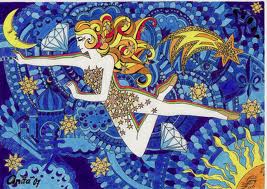 As of January 1, 2012, BeWrite Books is an ‘Ebook-First’ publisher ... lavishing the same precision, experienced and talented editorial, design and technical care on its digital editions as it has on its print books since the turn of our new millennium.
As of January 1, 2012, BeWrite Books is an ‘Ebook-First’ publisher ... lavishing the same precision, experienced and talented editorial, design and technical care on its digital editions as it has on its print books since the turn of our new millennium.In a nut shell, print is now a by-product of our ebook editions rather than vice-versa.
This innovative shift of emphasis is not made lightly. Not by a long chalk. Not by a looong-looooong chalk, folks. We’ve been carefully and diligently preparing for its inevitability. It is also encouraged by our authors and readers.
It comes after impressively successful ebook-only field trials on some BB publications (our biggest seller in a decade is one of these recent ebook-only productions) and with a huge and independent digital distribution base we’ve painstakingly built, store-by-store, according to complex and strict individual technical requirements and legally nit-picking third-party retail contracts, over the past two years.
And it is backed by heavy financial investment in specialized technology, new and vital company registrations, retained professional services ... and sheer hard work and research by the BB team since we focused on this course in 2010.
Make no mistake; BeWrite Books is a serious and progressive house. We've always kept at least one step ahead of the game.
And it is backed by heavy financial investment in specialized technology, new and vital company registrations, retained professional services ... and sheer hard work and research by the BB team since we focused on this course in 2010.
Make no mistake; BeWrite Books is a serious and progressive house. We've always kept at least one step ahead of the game.
The result is that a whopping 98% of our readers voted with their credit cards and PayPal payments in 2011 to tell us they prefer to buy BeWrite Books in ebook formats than in paper editions.
And sales are going up, up and away. They're greater than ever and getting greater still by the month.
And sales are going up, up and away. They're greater than ever and getting greater still by the month.
We won’t be pulling out of print immediately or entirely, and Ingram – the biggest book distributor on the planet – will continue to deal with our print editions, although we now find we have higher market penetration than even the mighty Ingram when dealing independently with digital.
When readers loudly send us such a clear message, we have to listen ... and our authors have to listen. We expect the public to read what we offer, so we must extend to them the courtesy of hearing and digesting what they have to say in return. Authors and readers should think of themselves as partners whenever a book is opened. Each *collaborator* merits a fair hearing. And the publisher must quickly adjust accordingly. Agreed?
When readers loudly send us such a clear message, we have to listen ... and our authors have to listen. We expect the public to read what we offer, so we must extend to them the courtesy of hearing and digesting what they have to say in return. Authors and readers should think of themselves as partners whenever a book is opened. Each *collaborator* merits a fair hearing. And the publisher must quickly adjust accordingly. Agreed?
So we’ve moved the goalposts. A new BeWrite Books author’s title must now prove its literary worth in ebook sales to the general reading public before we will publish a printed edition under the BB logo.
We’re putting the reader in the driver’s seat ... right where s/he belongs.
We’re putting the reader in the driver’s seat ... right where s/he belongs.
Our publishing house is now among the first – if not THE first – to retain the Old School values of what’s lately become known as ‘traditional’ publishing, but to initially apply them to ebook production.
We don't blush with embarrassment at the inexperienced self-publisher’s disparaging description of established publishing houses and their expert editors as ‘gatekeepers’. We strongly believe that rigorous selection of submissions is key and that perfect editorial and design treatment of accepted and ultimately published work is the reader’s due. We are proud to be the ‘gatekeepers’ who read and work so hard and long to filter the slush pile for quality rather than leaving that tedious job entirely to the reader, who is otherwise bewildered by tens of thousands of raw manuscripts randomly posted with the tap of a key or two at sales websites purely on the whim of their arrogant ‘authors’. Absolutely unregulated instant ‘publication’ benefits nobody.
(It must be honestly said with humility and all due honor that a very few renowned self-publishers – overwhelmingly those who have built their reputations through large and established publishers and who have the nous to expensively contract pro editors, designers and technicians – must not be written off lightly.)
We also believe that a good book is a good book, whether read on paper or on a handy, pocket- and purse-sized ebook-dedicated reading device or tablet.
Existing BeWrite Books authors and those newcomers to whom we’ve already made informal promises are not necessarily affected by our new digital-first policy and may choose which model they wish applied to their works. But if 2012’s entirely new authors don’t achieve an ebooks sales target within a year of their ebook editions release (or if existing BeWriters prefer the new deal) their print rights will be fully restored and they will be FREELY offered perfectly prepared (covered, edited, proofed and designed), ready-for-print files to use as they will as we continue to distribute and plug e-editions for the remainder of the agreement period.
We don't know of ANY other publisher offering such a clean and generous agreement. You?
We don't know of ANY other publisher offering such a clean and generous agreement. You?
Either way, authors win through much higher royalty payments under the new deal and help BB by unburdening us of loss-making print editions (only two percent of our sales, remember, and very costly to produce and maintain where many more that a hundred titles are involved at any given time), whilst taking advantage of returned print rights and freely provided print-ready files to use elsewhere. We can also effectively and freely cross-promote digital and available print.
We firmly believe that any BeWrite author will agree that we sometimes must play hard-ball before a book is ready to run ... but we ALWAYS play fair.
We firmly believe that any BeWrite author will agree that we sometimes must play hard-ball before a book is ready to run ... but we ALWAYS play fair.
As of January 1, you'll find the same. That's when we re-open to new and unsolicited submissions, and you can access the detailed warts-n-all information you need at www.bewritebooks.com and – for some time to come – still at www.bewrite.net. (Should the website appear at all like the old maroon-colored one and without the new, grey-background banner heading similar to that you now see on this blog, please simply refresh your browser. Any hitch; just drop us a line and we’ll talk you through. You all know we're just an email away,)
We think you’ll find our new bookstore section’s presentation particularly stunning, but please do take time to read and understand the other sections, and especially the new submissions and conditions details, now incorporated in a simple, downloadable and shareable e-booklet of 8,000 words of fine detail and advice. We make no apologies for the length of this section you NEED to understand us and up-to-the-minute industry trends before trusting your valuable work to BB.
Also please note our new and free mini-ebooks to help browsers choose and authors to help us promote their work at the click of the button. Each of these small productions carries full color cover, book notes, conditions, reviews, author biography and picture and a free extract. Promo-to-go at the tap of a key. We’re about 70% of the way through the existing catalog and all titles will be covered by their own mini-ebooks by the end of January.
 By the way, the new BeWrite Books website can now read your mind ... well, at least it will identify the device you’re reading on and adjust its presentation accordingly. The fancy clockwork is hidden behind the scenes. Our efforts are largely out of sight, to let the website and not the browser do the work.
By the way, the new BeWrite Books website can now read your mind ... well, at least it will identify the device you’re reading on and adjust its presentation accordingly. The fancy clockwork is hidden behind the scenes. Our efforts are largely out of sight, to let the website and not the browser do the work.Also, we’re producing a free ebook very soon to help authors help us in the major job of getting themselves and their books noticed. Obscurity is the author’s Public Enemy Number One. Please take this fact very, very seriously and join us in getting your name and your work out into the bright light of day.
And let’s hope your readers respond with satisfaction, glowing reviews, and maybe even interact by dropping a private line to their favorite BB authors. If they do PLEASE respond to their thoughtfulness and kindness with a personal note,
So here’s to a Happ-E New Year, folks.
Best Wishes for the best of years. Neil, Tony, Hugh, Sam










































